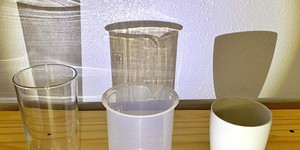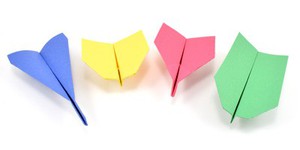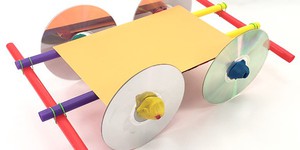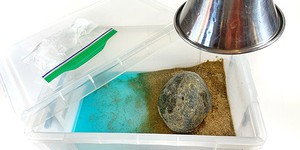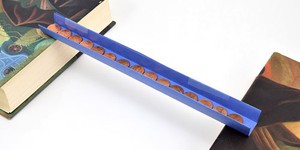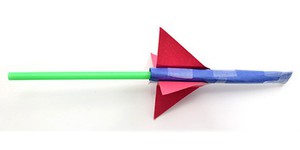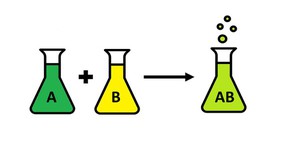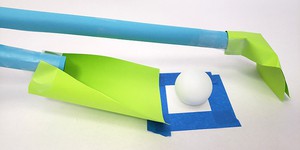Lesson Plans (252 results)
|
Select a resource
Sort by
|
Lesson Plan
Grade: 3rd-5th
5 reviews
Vibrobots are tiny robots powered by a vibrating motor, like the type found in cell phones. In this lesson plan, your students will learn about engineering design as they build their own vibrobots from craft materials. No previous experience with robots is required!
Read more
NGSS Performance Expectations:
Lesson Plan
Grade: 1st
18 reviews
In this lesson, students explore firsthand what transparent, translucent, and opaque mean, and how they are related to light. They will place a variety of materials in front of an illuminated object and predict if and how well they will be able to see the object through the material sheet. In doing that, students will realize that different materials allow different amounts of light to pass through.
Remote learning:
This lesson plan can be conducted remotely. The Engage section of the…
Read more
NGSS Performance Expectations:
Lesson Plan
Grade: 3rd-5th
24 reviews
Are paper airplanes a nuisance in your classroom? They don't have to be! Those distractions can be a constructive learning opportunity: use them to teach your students about the engineering design process. In this fun lesson, you will be the "customer" ordering a paper airplane, and your student teams will be engineering companies that will manufacture planes. Before they start making planes, they need to define the criteria and constraints of this engineering problem.
Read more
NGSS Performance Expectations:
Lesson Plan
Grade: 6th-8th
5 reviews
Combine Newton's third law of motion with engineering design in one fun lesson! Your students will learn about equal and opposite reaction forces as they design and build a bumper to protect a toy car during a crash.
Read more
NGSS Performance Expectations:
Lesson Plan
Grade: 6th-8th
11 reviews
Earth is a planet full of water. 70% of its surface is covered with water in oceans, lakes, rivers, and more. Water on our planet can also be found in the atmosphere and underground. In this lesson, students will explore how water is continually cycled among land, the oceans, and the atmosphere. As students build a physical model of the water cycle, they will be able to simulate and observe evaporation, condensation, precipitation, and other water cycle processes in real-time.
Remote…
Read more
NGSS Performance Expectations:
Lesson Plan
Grade: Kindergarten-2nd
19 reviews
Your students have probably walked or ridden over a bridge at some point in their lives. In this engineering activity they will design and make bridges out of folded pieces of paper, and test how much weight they can hold with pennies. How does the shape of a bridge affect its strength? Let your students explore and find out with this lesson!
This lesson can be expanded to a second lesson looking at how the material a bridge is made out of can change its strength; see second lesson for details.
Read more
NGSS Performance Expectations:
Lesson Plan
Grade: 3rd-5th
25 reviews
This lesson will introduce your students to the scientific method using a fun, hands-on activity.
A middle school version of this lesson plan is also available.
Read more
NGSS Performance Expectations:
Lesson Plan
Grade: 9th-12th
10 reviews
This lab discusses types of reactions and replaces traditional reaction experiments involving chemicals such as lead (II) nitrate, barium chloride, and silver nitrate with greener alternatives. This lab is designed to challenge students to identify types of chemical reactions and distinguish between those that use safer, less hazardous chemicals and those that are more dangerous. Students will make a choice as to which reaction they will perform using the 12 Principles of Green Chemistry. They…
Read more
Lesson Plan
Grade: 9th-12th
1 review
In this lesson, students will employ the enzymatic decomposition reaction of hydrogen peroxide to investigate how chemical reactions are affected by enzymes and different substrate concentrations. Students will be challenged to control the rate of the reaction by adjusting the amount of substrate and thus changing the catalase activity. Foam production, created by the enzymatic breakdown of hydrogen peroxide into water and oxygen, will function as a proxy for the reaction rate. Based on their…
Read more
NGSS Performance Expectations:
Lesson Plan
Grade: 6th-8th
19 reviews
In this fun engineering lesson plan, your students will build devices from paper, tape, string, and paper clips to pick up and retrieve a ping pong ball. The challenge is to pick up the ball from as far away as possible!
Elementary school and
high school versions of this lesson plan are also available.
The 2023 competition is over, but you can see what students built and learn about the winners on the 2023 Engineering Challenge summary page.
Read more
NGSS Performance Expectations:
|



